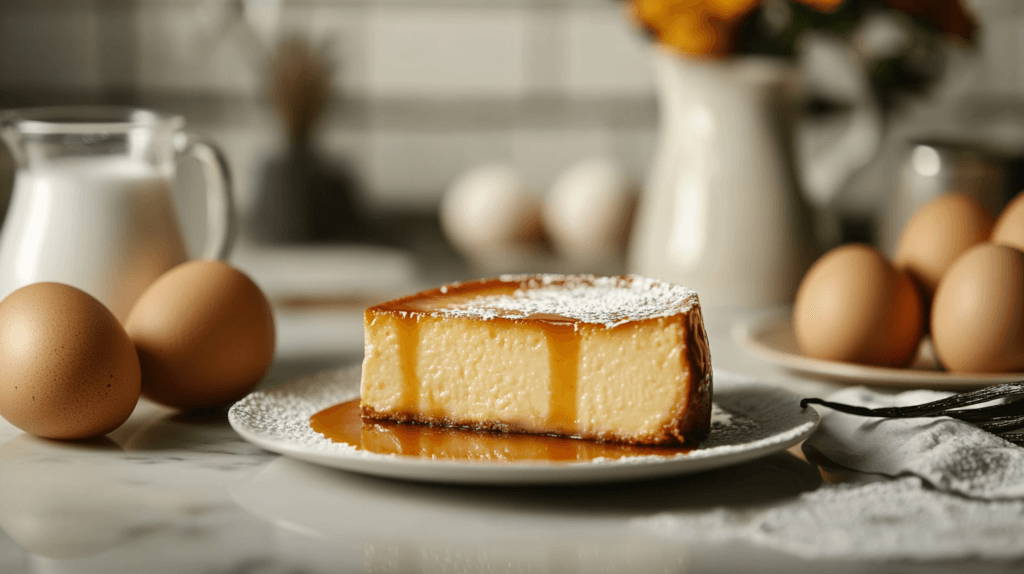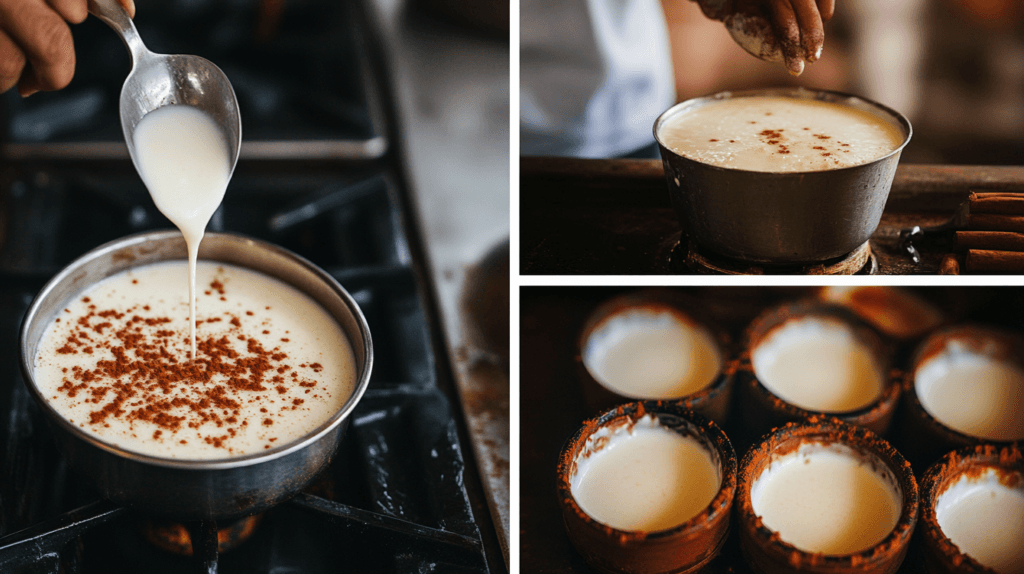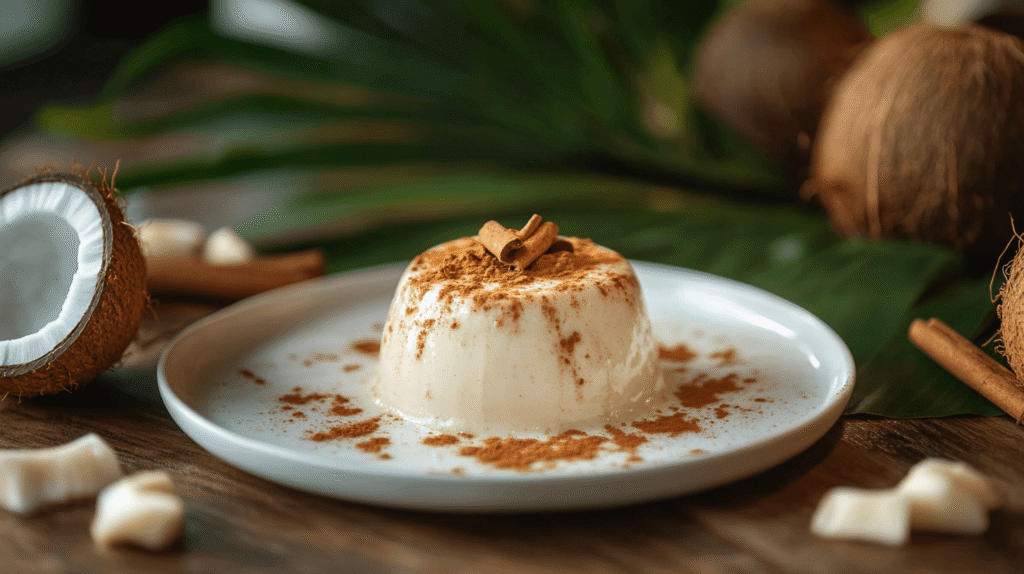What is the most popular dessert in Puerto Rico? If you’ve ever tasted the island’s sweet creations, you know the competition is fierce. Puerto Rican desserts are known for their tropical flavors, rich history, and ties to cultural traditions. Among the many delicious options, one dessert stands out as the most beloved: tembleque.
Tembleque, a creamy coconut pudding, has become a staple in Puerto Rican homes and celebrations. Its silky texture and delicate flavor have earned it a special place at the table, particularly during the holiday season. In this article, we’ll explore why tembleque holds this iconic status, how it’s made, and what other desserts represent Puerto Rico’s vibrant culinary heritage.
Table of Contents
A Cultural Journey Through Puerto Rican Sweets
The History of Desserts in Puerto Rico
Desserts in Puerto Rico date back centuries, evolving through the blending of Taíno, African, and Spanish culinary traditions. The Taíno people introduced native ingredients like yuca and guava, which still feature in many traditional desserts. Later, Spanish colonizers brought sugarcane, a game-changer that made sweet creations more accessible. African slaves introduced ingredients like coconut and spices, adding unique flavors to Puerto Rican sweets.
Influences on Puerto Rican Dessert Culture
Puerto Rican desserts are a testament to the island’s diverse heritage. Coconut, plantains, rice, and tropical fruits like mango and pineapple dominate traditional recipes. Sugarcane plantations during colonial times made sweets a cultural staple, while modern innovations have kept these treats relevant today. The island’s love for desserts is also deeply tied to family gatherings, religious festivals, and celebrations.
The Most Popular Dessert in Puerto Rico: Tembleque
What Is Tembleque?
Tembleque is a creamy coconut pudding with a jelly-like texture. Its name comes from the Spanish word “temblar,” which means “to tremble,” reflecting the dessert’s delicate, wobbly consistency. Made from a handful of simple ingredients—coconut milk, cornstarch, sugar, and spices—it’s a dessert that anyone can prepare, yet its flavor feels anything but basic. The combination of coconut’s richness and the warm aroma of cinnamon makes it a favorite for Puerto Ricans of all ages.
How Tembleque Became a National Favorite
Tembleque’s rise to fame can be attributed to its simplicity and versatility. It is a dessert that can be whipped up quickly, making it perfect for last-minute gatherings or elaborate holiday feasts. Tembleque is especially popular during the Christmas season, where it often takes center stage alongside coquito (a coconut-based holiday drink) and arroz con dulce. Its nostalgic flavor and ties to family traditions have cemented its place as Puerto Rico’s most beloved dessert.
Coconut as the Star Ingredient
Coconut milk, the key ingredient in tembleque, has been a staple in Puerto Rican cooking for centuries. It lends the dessert its signature creamy texture and tropical flavor. Freshly grated coconut was traditionally used to extract milk, though canned coconut milk has simplified the process without compromising the taste.
The Unique Preparation of Tembleque
Tembleque’s preparation is straightforward yet requires careful attention. The coconut milk, sugar, and cornstarch are cooked over low heat until the mixture thickens. The pudding is then poured into molds and chilled until it sets. A sprinkle of cinnamon on top provides the finishing touch, adding warmth and depth to the flavor.
Other Iconic Desserts in Puerto Rico

While tembleque takes the crown as Puerto Rico’s most popular dessert, the island is home to a variety of other sweet delights that reflect its rich culinary heritage. These desserts are loved just as much for their flavors as for the cultural stories they tell.
Flan: A Sweet Custard Delight
Flan is a classic dessert in Puerto Rico, enjoyed at family gatherings, holidays, and special occasions. This creamy custard, topped with a layer of golden caramel, is both indulgent and elegant. While flan originated in Spain, Puerto Ricans have made it their own by experimenting with local flavors like coconut (flan de coco) or cheese (flan de queso). The smooth texture and balanced sweetness make it a versatile favorite that pairs well with a cup of strong Puerto Rican coffee.
Arroz con Dulce: Sweet Rice Pudding
Arroz con dulce, or sweet rice pudding, is a comforting and aromatic dessert that highlights the island’s love for spices and tropical ingredients. This dish is made by simmering rice in a mixture of coconut milk, sugar, cinnamon, cloves, and ginger, resulting in a rich, flavorful treat. Raisins are often added for extra sweetness, and the dish is commonly served during Christmas festivities. Arroz con dulce is a labor of love, requiring slow cooking and constant stirring, but the result is worth every effort.
Tres Leches Cake: A Latin American Classic
Tres leches cake is another beloved dessert in Puerto Rico. This sponge cake is soaked in three types of milk—evaporated milk, condensed milk, and heavy cream—giving it a moist, almost pudding-like texture. The cake is often topped with whipped cream and fresh fruit for an extra layer of indulgence. While tres leches cake is popular throughout Latin America, Puerto Rico has embraced it as a staple for birthdays and celebrations.
Quesitos: Puff Pastry with a Twist
Quesitos are a delightful snack or dessert made from flaky puff pastry filled with sweetened cream cheese. Sometimes, the pastry is drizzled with honey or sprinkled with sugar to enhance its sweetness. These little treats are a popular choice at bakeries and make for a quick, satisfying bite at any time of day. Quesitos represent the perfect combination of crispy, creamy, and sweet.
How Desserts Shape Puerto Rican Celebrations
Puerto Rican desserts are more than just food—they’re an integral part of the island’s traditions and celebrations. From Christmas feasts to casual family gatherings, sweets are a way to bring people together and create lasting memories.
Desserts During Christmas Festivities
The holiday season in Puerto Rico is a time of joy, music, and, of course, incredible food. Desserts like tembleque, arroz con dulce, and flan are staples on Christmas tables. They’re often served alongside other holiday classics like pasteles and pernil. The tradition of sharing desserts during parrandas (Puerto Rican Christmas caroling) adds a layer of sweetness to the festive season.
Sweets at Family Gatherings and Festivals
Whether it’s a birthday, wedding, or local festival, desserts play a central role in Puerto Rican celebrations. Festivals like the Fiestas de la Calle San Sebastián feature stalls selling flan, quesitos, and other treats, showcasing the island’s rich dessert culture. Sharing these desserts is a way to strengthen bonds and honor traditions passed down through generations.
How to Make Tembleque at Home

One of the best things about tembleque is how easy it is to make, even for those who aren’t expert cooks. With just a few simple ingredients and straightforward steps, you can recreate this iconic Puerto Rican dessert in your own kitchen.
Ingredients for the Perfect Tembleque
To make a traditional tembleque, you’ll need the following ingredients:
- 2 cups of coconut milk (fresh or canned)
- 1/2 cup of granulated sugar
- 1/4 cup of cornstarch
- 1/4 teaspoon of salt
- Ground cinnamon (for garnish)
These ingredients are staples in most Puerto Rican households, particularly during the holiday season. The use of coconut milk gives tembleque its signature tropical flavor, while cornstarch acts as a natural thickener.
Step-by-Step Instructions
- Combine the Ingredients: In a medium saucepan, whisk together the coconut milk, sugar, cornstarch, and salt until smooth. Make sure there are no lumps, as this will ensure a creamy texture.
- Cook the Mixture: Place the saucepan over medium heat and stir constantly. As the mixture heats up, it will begin to thicken. This process usually takes about 5–7 minutes. Once the mixture reaches a pudding-like consistency and coats the back of a spoon, it’s ready.
- Pour into Molds: Remove the saucepan from heat and pour the mixture into individual molds or a large dish. Use silicone molds or small bowls for easy removal.
- Chill the Tembleque: Cover the molds with plastic wrap and refrigerate for at least 2–4 hours, or until the dessert is fully set.
- Garnish and Serve: Once chilled, unmold the tembleque onto a plate and sprinkle generously with ground cinnamon. Serve cold and enjoy!
Tips for Perfecting the Recipe
- Adjust Sweetness: If you prefer a sweeter dessert, add a little more sugar to the mixture. Alternatively, reduce the sugar for a milder flavor.
- Fresh Coconut Milk: For the most authentic taste, consider making fresh coconut milk by blending grated coconut with water and straining it through a cheesecloth.
- Experiment with Toppings: While cinnamon is traditional, you can add toasted coconut flakes or a drizzle of caramel for a creative twist.
Making tembleque at home is a rewarding experience, allowing you to connect with Puerto Rican culture and savor a dessert that has been loved for generations.
FAQs About Puerto Rican Desserts
What Other Coconut-Based Desserts Are Popular in Puerto Rico?
In addition to tembleque, Puerto Rico is known for coconut-based treats like coquito (a creamy coconut eggnog) and piña colada cake, which incorporates the flavors of coconut and pineapple.
Are Puerto Rican Desserts Easy to Make at Home?
Yes! Many Puerto Rican desserts use basic ingredients and simple techniques, making them beginner-friendly. Try creating tembleque, flan, or arroz con dulce at home using tips from our Easy Puerto Rican Recipes.
What Are the Healthiest Puerto Rican Desserts?
Tembleque and arroz con dulce can be made healthier by using natural sweeteners like honey or coconut sugar. Desserts that highlight fresh fruits, such as guava or mango, are also great low-calorie options.
What Makes Puerto Rican Desserts Unique?
Puerto Rican desserts stand out because of their tropical flavors and use of ingredients like coconut, plantains, and spices. They are also deeply tied to cultural traditions, making them a meaningful part of the island’s identity.
Can Puerto Rican Desserts Be Found Outside the Island?
Yes, Puerto Rican desserts are increasingly available in cities with large Puerto Rican communities, such as New York, Miami, and Chicago. Many bakeries and restaurants specialize in these treats, offering a taste of the island abroad.
Conclusion: The Sweet Essence of Puerto Rican Culture
Puerto Rican desserts are much more than just delicious—they’re a reflection of the island’s history, culture, and traditions. From the creamy, coconut-rich tembleque to festive arroz con dulce and indulgent flan, these sweets bring people together and tell the story of Puerto Rico’s diverse heritage.
Tembleque, in particular, embodies everything that makes Puerto Rican desserts so special. Its simplicity, comforting texture, and vibrant flavor make it a favorite for celebrations and everyday indulgence alike. Whether you’re enjoying a slice of flan at a family gathering or making tembleque for the first time, Puerto Rican desserts are sure to leave a lasting impression.
To discover more about Puerto Rico’s rich culinary heritage, explore our guide to FAQs About Puerto Rican Desserts.
Printable Recipe Card
Want just the essential recipe details without scrolling through the article? Get our printable recipe card with just the ingredients and instructions.

